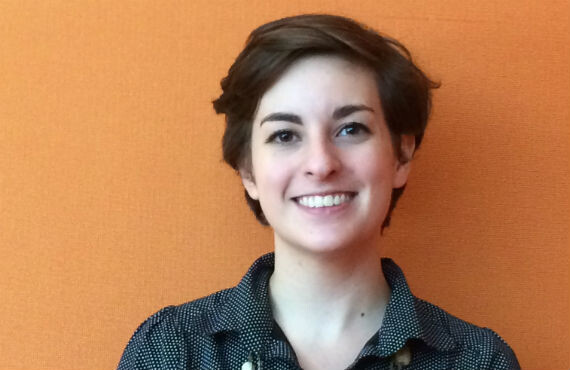Learning Lessons by Integrating Sustainability in the Classroom at Penn
As an environmental studies major at the University of Pennsylvania, Kinsey Miller already knew about many sustainability issues.
But, after spending the summer as a researcher in the Penn Green Campus Partnership’s Integrating Sustainability Across the Curriculum program, her interests have expanded further.
Miller, a junior in the College, was one of four students selected to participate in ISAC this summer.
The eight-week program offers internships that match student research assistants with Penn faculty members to work on infusing new or existing courses with themes of environmental sustainability.
For her work with Ann Greene, adjunct professor of history in the School of Arts & Sciences, Miller read and summarized books and articles that could be incorporated into Greene’s “Energy in American History” class.
“I really learned a lot,” says Miller. “I didn’t know what to expect going in, but it was really like taking a class because I was reading so much and doing so much research, that I felt like I should have written a research paper.”
Miller was surprised to learn that the infrastructure for energy sources was a major reason for slow progress in producing greener energy sources such as wind or solar energy.
“The way we’ve consumed energy how these infrastructures have grown and been sewn into our society makes us inextricable from the energy sources that we use,” says Miller. “We already have the coal and the nuclear reactors there transporting electricity to the power grid. Those are permanent structures. So it’s really in the infrastructure and the immovability where the problems arise.”
Miller, of Richmond, Va., also worked with Daniel Barber, professor of architecture in the School of Design. She conducted research on architectural firms that focus on sustainability. The materials will be incorporated in Barber’s course, “Architecture in the Anthropocene.” The course explores how social awareness and informed decision making can have an impact in protecting ecosystems.
“Anthropocene” is a relatively recent term referring to the period of geology occurring since the industrial revolution to the present day, during which people’s actions have directly altered the earth.
“We need to think of ourselves as actors and creators of a new geological age,” says Miller. “That’s significant and kind of terrifying to have that much power as a human being and to know that it’s been caused by our consumption, particularly in the last century and a half.
While Miller’s career aspiration is to work in sustainable agriculture, the ISAC program has expanded her interests to include the history of energy and sustainable architecture.
Miller’s work with Barber has influenced the way she now views buildings, parks, green space and the supporting infrastructure such as energy networks in neighborhoods and cities.
“It has helped shape what kind of house I’d like to live in and where I’d like to live when I’m out on my own. A big house that’s LEED certified or a small house that doesn’t use so much energy.”








